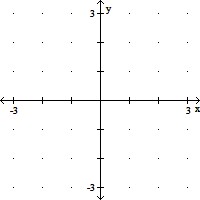Find two paths of approach from which one can conclude that the function has no limit as (x, y) approaches (0, 0).f(x, y) = 
What will be an ideal response?
Answers will vary. One possibility is Path 1: x = t, y = t ; Path 2: x = t, y = t5/2
Mathematics
You might also like to view...
Remove the parentheses and simplify, if possible.( 6n3 + 13n + 10) - ( 9n2 - 9n - 6)
A. -3n2 + 22n + 16 B. 6n3- 9n2 + 22n + 16 C. 6n3- 9n2 + 22n + 4 D. -3n2 + 22n + 4
Mathematics
Express the product as a sum containing only sines or cosines.sin  cos
cos 
A.  sin cos(7?)
sin cos(7?)
B.  [cos(4?) + sin(3?)]
[cos(4?) + sin(3?)]
C.  [sin(4?) - sin(3?)]
[sin(4?) - sin(3?)]
D.  [cos(8?) - sin(6?)]
[cos(8?) - sin(6?)]
Mathematics
Use a formula to write an equation for each problem, then solve it.The foundation of a house has a rectangular shape. The width is 24 feet and the length is 49 feet. Find the area.
A. area = 2977 sq ft B. area = 1176 sq ft C. area = 146 sq ft D. area = 73 sq ft
Mathematics
Graph the function.y =  sin
sin 

A. 
B. 
C. 
D. 
Mathematics